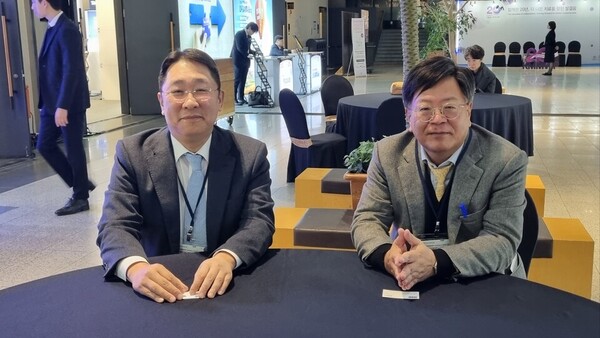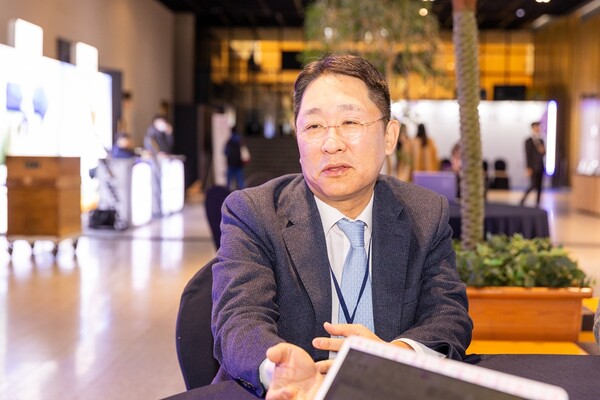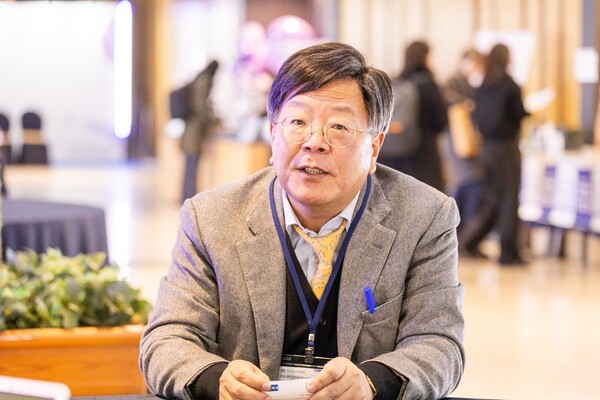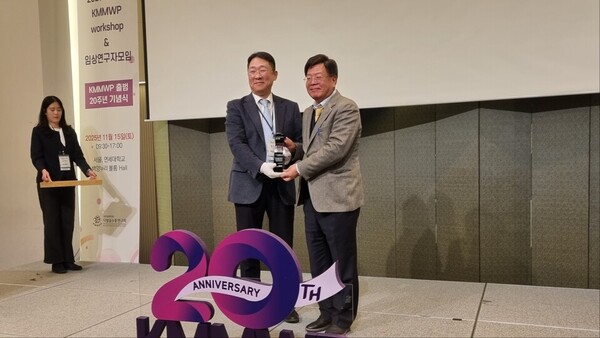Multiple myeloma primarily affects men over 65 years of age and is steadily increasing in prevalence in Korea. However, the exact cause of the disease remains unknown. Consequently, patients have faced difficulties in diagnosis and treatment.
Unable to stand idly by in the face of these challenges, doctors came together to form the Korean Multiple Myeloma Working Party (KMMWP) under the Korean Society of Hematology. Founded in November 2005, the working party now marks its 20th anniversary. Over the past two decades, researchers have relentlessly pursued a deeper understanding of multiple myeloma and improved treatments, resulting in renewed hope for patient survival.

The impact of these efforts is evident in recent data. According to 2023 data from the National Cancer Registry, the five-year relative survival rate for multiple myeloma in Korea from 2018 to 2022 was 51.3 percent, nearly double the 29.8 percent rate from 2001 to 2005. While treatment outcomes are improving, policy support—such as accelerating the introduction of new drugs—is still needed to ensure more patients receive optimal care. Cultivating young researchers also remains essential.
To address these ongoing issues and discuss future directions, the KMMWP held its 20th Anniversary Ceremony at Yonsei University last Saturday. At the event, Korea Biomedical Review met with KMMWP Chairman Kim Jin-seok and founding Chairman Lee Jae-hoon to reflect on their journey over the past 20 years and examine challenges that lie ahead.
KBR: The Korean Multiple Myeloma Working Party (KMMWP) has reached its 20th anniversary. Please share your thoughts.

Kim: Just 20 years ago, multiple myeloma received little attention due to the small number of patients and limited treatment options. However, as patient numbers increased and therapies advanced, multiple myeloma became an attractive field for both research and clinical practice. Over the past two decades, multiple myeloma has undergone significant changes.
KBR: Among the changes in multiple myeloma care over the past 20 years, what has given patients the greatest hope?
Kim: In the past, the drugs available for multiple myeloma patients were limited. However, with the recent introduction of new drugs, they can now be used even in first-line therapy, and treatment outcomes have significantly improved.
Multiple myeloma is a disease that causes patients a lot of suffering due to infections and fractures. In the past, many patients were hospitalized with pneumonia or suffered pain from fractures. However, as treatment has improved, these problems have decreased, and average survival time has increased. Previously, survival was around one to two years, but now there are patients living healthily for over 10 years. From a treatment perspective, this is very rewarding.

Lee: Treatment has advanced tremendously in the last five years. While it's not yet considered a curable disease, the average life expectancy has increased by over 10 years. There are also quite a few cases of survival for over 20 years or even a cure. Minimal residual disease (MRD) testing can detect whether even one cancer cell remains among 100,000 cells. Recent studies show that nearly 50 percent of patients have no MRD five years after treatment.
KBR: Despite progress, there still seem to be areas needing improvement in policy and healthcare systems. What are some of these ongoing challenges?
Kim: Since all newly released drugs are high-cost medications, it's difficult to follow the West’s recommended standard treatment guidelines in Korea. This is because coverage is often not provided. In this regard, I hope the government or pharmaceutical companies will develop policies that better consider patients' needs.
Lee: Compared to Japan, another Asian country, new drug approvals in Korea tend to be delayed. Breakthrough treatments implemented in Europe take a long time to be introduced domestically and covered by insurance.
KBR: To further improve patient outcomes, what new drugs do you believe require urgent clinical introduction?
Kim: CAR-T cell therapies and bispecific antibody drugs are currently awaiting insurance coverage. Bispecific antibodies are novel immunotherapies requiring price negotiations with the government during the reimbursement process.
We hope this process moves swiftly. We urge the swift introduction of new drugs, such as targeted therapies, as first-line treatments. While excellent drugs entering as fourth- or fifth-line options are currently used later in the treatment sequence, it is essential to prioritize their use from the first line to maximize efficacy.
However, advancing these drugs through the treatment sequence domestically is slow.
Lee: I wish we could use approved drugs with more freedom. When obtaining combination approval, restrictions are placed on using only the approved drugs and dosages. For example, if drug A is approved, then only A and B can be approved as a combination. It's impossible to use drug C instead of an existing drug. This not only limits research but also impacts patient treatment outcomes. This restriction is regrettable.
KBR: Shifting focus to the future, what kind of support do you think is needed at the national level for the next generation of researchers?
Kim: To conduct research, you ultimately need people and money. Hematology itself is known to be a demanding specialty. It's tough because you have to care for inpatients and critically ill patients without breaks on weekends or holidays. However, unlike chronic diseases, multiple myeloma can be treated, making the physician's role crucial.
Furthermore, financial support is essential for conducting research. While overseas organizations establish funds to actively pursue research, such systems are largely unavailable in Korea. Research societies or individual researchers must fund their own studies, making large-scale research difficult.

KBR: Any message you'd like to convey to patients?
Kim: Korea has many hospitals, with large hospitals evenly distributed across regions and in Seoul. My top priority upon becoming chairman was standardizing the care of multiple myeloma. The goal is to ensure patients receive the same level of standardized care regardless of where they are treated.
The KMMWP has consistently worked towards standardization by sharing treatment guidelines and protocols nationwide and exchanging experiences at symposiums. Therefore, patients receiving treatment in regional areas need not worry that they are receiving incorrect treatment.
Though consultation times may be brief, physicians conduct treatment after considerable deliberation and preparation behind the scenes. By trusting their attending physician and consistently following treatment, patients can expect favorable outcomes.
Lee: Clinical trials are the process of applying future treatments to current patients. Patients sometimes misunderstand clinical trials as mere ‘experiments,’ but they are actually a crucial process that safely provides future treatment opportunities. Therefore, I encourage all eligible patients to participate in clinical trials, as your involvement will help elevate the standard of care for multiple myeloma and significantly improve patient survival.
KBR: Looking ahead, what are the main objectives that the KMMWP is aiming for in the coming years?
Kim: We have significantly enhanced basic research capabilities and worked hard on patient education and improving public awareness. However, we are not yet actively engaged on the international stage. I believe this is an area that needs development over the next 20 years.
Lee: We are not yet at a level where we can stand shoulder-to-shoulder with advanced nations like the U.S., Europe, and the U.K. on the international stage. Therefore, the remaining task is for the next generation of researchers to step onto the global stage. The KMMWP has done well so far and will continue to grow.
Related articles
- Janssen Korea to shut Incheon vaccine plant, putting 230 jobs at risk
- AstraZeneca’s Imfinzi, Imjudo, and Ultomiris clear reimbursement panel review
- New multiple myeloma drugs, Tecvayli and Elrexfio, pass cancer disease panel
- GC Cell introduces multiple myeloma CAR-T therapy from China’s IASO Biotech
- Broad-spectrum antibiotic use should be optimized 3 months before cancer patients’ death: study
- Catholic University researchers identify strong link between bone fractures and mortality in multiple myeloma patients
- Ewha Blood Cancer Hospital accelerates refractory blood cancer care
- Doctors warn Korea is falling behind global standards in AL amyloidosis treatment
- [Reporter’s Notebook] The new drug is here, but not for everyone: Korea’s tight grip on innovation access

